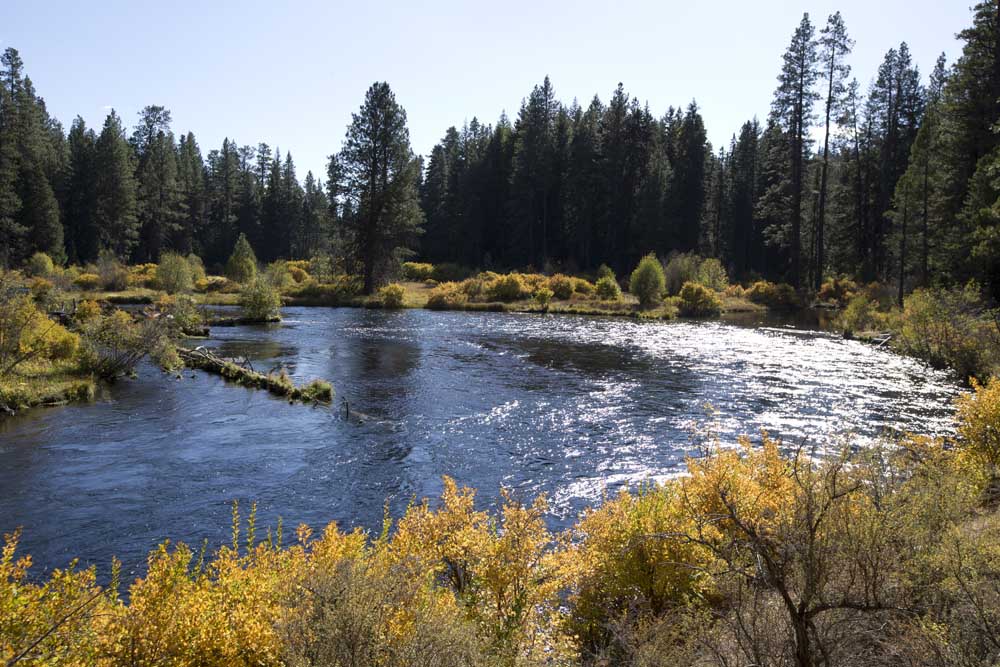Metolius preserve will now be managed by Central Oregon environmentalists
Published 12:00 am Monday, October 8, 2018

- A guided Metolius Preserve Hike will take place on Saturday.
CAMP SHERMAN —
Along the banks of a far-flung stretch of the Metolius River, where fall’s bright colors are in full effect, a 30-acre stretch of land with a unique ecology and deep ties to Central Oregon’s history will now be managed by environmentalists who call the region home.
Earlier this month, the Deschutes Land Trust completed its acquisition of the Metolius River Preserve from The Nature Conservancy, a move the leaders of the Bend-based land trust believe will allow for more hands-on management of the property.
“Given our presence, it just makes more sense,” said Brad Chalfant, executive director of the Deschutes Land Trust. “We can be boots on the ground in a way that is hard for them.”
Chalfant said the property, located about 8 miles from the headwaters of the Metolius River, on the north side of Black Butte, checks a lot of boxes for the organization — from its location along one of Central Oregon’s most pristine rivers, to its unusual mix of plants from different parts of the state, to its role in Central Oregon’s homesteading past.
“It’s not just the critters, not just the wildlife,” Chalfant said. “But it’s really about our connection to place.”
The parcel was first settled in 1915 by the Allen family, which made it the first European-American settlement on the Metolius River, Chalfant said. The Allens established a farm on the parcel and rented out space to local fishermen who traversed the river.
The property eventually passed into the possession of Erskine B. Wood and his family, who came down to the parcel to fish during the summer.
Chalfant said Wood grew up visiting the Nez Perce during the summer, and is the brother of Nan Wood Honeyman, Oregon’s first congresswoman.
“It’s a family that’s had a lot of involvement with Oregon’s history,” Chalfant said.
In the early 1980s, the Wood family donated the parcel to The Nature Conservancy for preservation, according to Chalfant. The environmental nonprofit, which owns property in around 70 countries, converted the land into a preserve and has managed it since that point.
While the land trust has discussed taking over the parcel for years, Derek Johnson, director of protection and stewardship for The Nature Conservancy’s Oregon chapter, said talks became more serious about a year ago. Johnson praised the land trust, saying the transfer will allow more hands-on maintenance on the property while allowing The Nature Conservancy to shift its focus to partnering with local governments on forest restoration projects.
“Both organizations really felt like it was a great opportunity,” Johnson said.
In addition to the history of the parcel, Chalfant said it has a unique mix of plants from both the east and west sides of the Cascade Mountains. In certain areas, western red cedar and other trees associated with the Willamette Valley grow alongside Central Oregon staples, such as ponderosa pine trees. He speculated that its proximity to the mountains could allow seeds from western trees to blow into the region.
“You don’t typically see that on the east side of the Cascades,” he said.
Even rarer, the parcel is home to a fen: a particular type of wetland that’s rarely seen in Central Oregon. Unlike bogs, which are fed primarily by rainfall, fens are fed by underground water.
Chalfant said the fen likely formed slowly, with generations of plants growing and dying to create a layer of peat — dead plant material — that retains water and eventually forms a wetland.
He added that fens are most commonly found on the coast, and having one in the Cascade Mountains provides habitat for a different variety of plants and animals than are typically found in the area.
“It’s a really special resource,” Chalfant said.
While the Deschutes Land Trust has land throughout the Deschutes Basin, including a 1,240-acre parcel on a nearby tributary, Chalfant said the Metolius River Preserve is the first preserve the land trust has acquired on the Metolius River.
While other rivers in the area have suffered from decades of grazing, ranching and industrial logging, Chalfant said the banks along much of the Metolius River is public land, and has largely been spared from particularly harsh land use.
In part because of that, the river is home to a variety of fish, including native bull trout, which are listed as a threatened species under the Endangered Species Act. The river also plays host to redband trout and Chinook salmon, and was home to Central Oregon’s first sockeye run in decades.
“The Metolius is the place that has the absolute pristine habitat,” Chalfant said. “This is about as good as it gets.”
Because of that, the land trust will likely take a lighter touch in its restoration work than it does on properties along Whychus Creek and the Crooked River. The land trust plans to bring in botanists and other scientists to help it develop a management plan for the area.
“When you say you’re going to protect something forever, that’s not a small undertaking,” Chalfant said. “We owe it to the next generation, and generations beyond.”
—Reporter: 541-617-7818, shamway@bendbulletin.com






